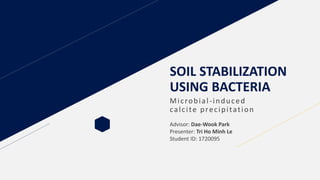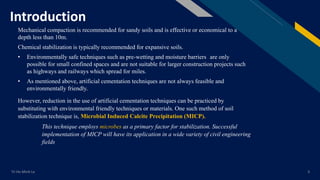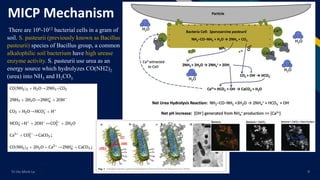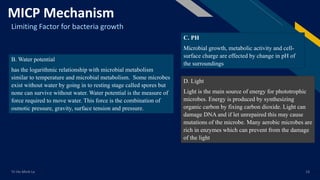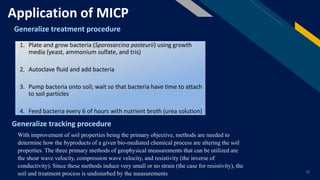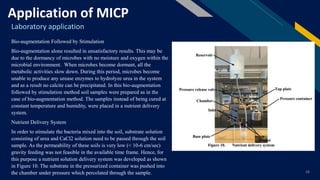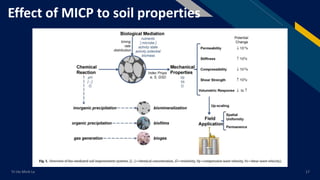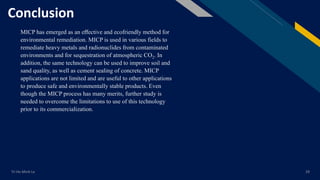The document summarizes microbial-induced calcite precipitation (MICP) for soil stabilization. MICP uses bacteria to cement soil particles together through the precipitation of calcite. The document discusses (1) how bacteria induce calcite precipitation through their urease enzyme activity, (2) how MICP improves soil properties like strength and permeability through calcite bridging of soil particles, and (3) laboratory experiments demonstrating the effect of MICP on stabilizing sandy soils.
